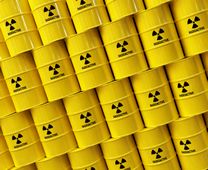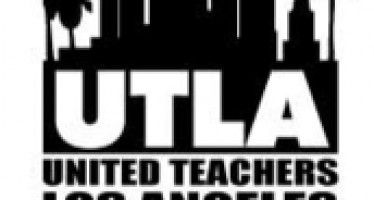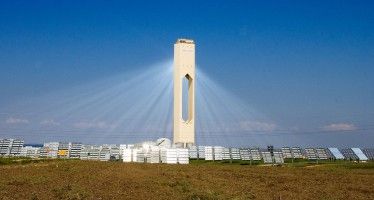State fails to track hot waste

March 8, 2010
By ANTHONY PIGNATARO
Buried within the $3 billion state Department of Public Health is a tiny, troubled agency that deals with some of the most toxic and dangerous substances in the history of the world. Headquartered on Capitol Avenue in Sacramento, the $22 million, 120-employee Radiological Health Branch monitors and regulates (or rather, attempts to monitor and regulate) radiation-emitting machinery as well as Low-Level Radioactive Waste (LLRW) created by hospitals, universities and biotech firms across the state.
What to do with LLRW is complicated and risky. “Groundwater contamination is a risk of LLRW disposal and long-term exposure to LLRW increases one’s risk of cancer,” industry analyst David Phillips wrote in 2008. “In addition, too many disposal sites spread across the nation raises security issues, such as terrorists looking for material to build ‘dirty-bombs.’”
A series of troubling government auditing reports say all is not well with the branch, the stated mission of which is “To protect and improve the health of all California residents by assuring the safety and effectiveness of foods, drugs, medical devices, and radiation through investigation, inspection, and control of the sources of these products.”
In June 2008, and again in February of this year, the California State Auditor took an in-depth look at the branch and found numerous problems:
* Inadequate reporting on the transport of LLRW, despite the fact that “millions” of pieces of radioactive waste move across the U.S. every year;
* An inability to justify a 280 percent fee hike for those who handle radioactive materials;
* A staffing plan based on obsolete data.
But the most troubling finding dealt with the way the branch handles inspections. Ensuring that X-ray and mammography machines of all types are used safely and responsibly is one of the branch’s most important tasks. But given the results of the auditor’s report – and two follow-up investigations – it’s pretty clear the branch isn’t up to the task.
“[T]he electronic data the branch uses to ensure that these inspections take place in a timely manner is not sufficiently reliable,” stated the auditor’s June 2008 report. “Examples of the errors we found include incorrect or missing inspection dates, dates that cannot be verified because the branch cannot provide the supporting inspection records, and mistakes in inspection priority codes, which are the classifications that define how frequently inspections should occur. Because this information in inaccurate or absent, the branch cannot effectively manage its workload for inspecting users and generators of radioactive materials.”
Though such findings are nearly two years old now, the February 2010 Implementation of State Auditor’s Recommendations report – the most recent of two return trips the state Auditor took to the branch – found that the branch was still having trouble showing that it could carry out LLRW inspections in a timely manner (in addition to the other concerns bulleted above). “Although the branch recognizes the limitations of its current data systems and has tried to replace them since 1996, it continues to operate in an environment in which it cannot adequately manage its work, thus limiting its ability to protect the public from potential health risks,” the state auditor reported.
Despite CalWatchdog e-mailing 15 questions to the Radiological Branch on Feb. 22, the branch ultimately did not provide any comment by press time. Given the nature of the controversy surrounding the branch, this isn’t altogether surprising.
“I’m professionally embarrassed,” Department of Health spokesman Ronald Owens said on Mar. 4 after we’d asked for the fourth or fifth time for some kind of answer to our questions. Owens assured us that they would indeed respond, and when they do, we will post a follow-up.
Despite its pleasing sounding name, Low-Level Radioactive Waste basically includes every kind of nuclear waste product except for spent nuclear reactor cores, which have half-life’s in the millions of years and require deep underground storage. In fact, hospitals and medical labs produce a lot of LLRW.
“For example, medical researchers at academic institutions use radioactive materials as imaging agents or as tracers to study drug metabolism to ensure the safety of potential new products,” the state auditor reported in 2008. “Hospitals and medical research facilities use radioactive materials for medical diagnosis and treatment of cancerous tumors and other ailments.”
LLRW can look like anything. “The low-level waste generated from these activities can take many forms, including cloth, plastic, and rugs containing traces of radioactive material,” said the state auditor’s report. “The physical form of low-level waste may not occur as solids only; it can also occur in liquid or gaseous states.”
To be fair, the proper care and disposal of LLRW is a thorny and difficult issue. Despite Congress passing the Low-Level Radioactive Waste Policy Act in 1980, only Texas is building a new facility capable of disposing of Class A, B and C LLRW. No other states are currently developing LLRW disposal facilities. California attempted to build such a facility in Ward Valley, but according to a 2009 report sent out by the non-profit American Nuclear Society, it never opened “because of political opposition, first by the Clinton Administration and later by the California Legislature and Governor (former Governor [Gray] Davis).”
Making matters worse, since June 2008 – the same month the state auditor released its first blistering report on the Radiological Health Branch – California has had access to just one disposal site for Class A LLRW (the least radioactive of the three classes of waste). It’s located in Clive, Utah, and serves the needs of 36 states.
The lack of sites other than Clive means disposal costs for LLRW generators are astronomical. A 2005 background paper put out by the non-profit Health Physics Society (HPS), which focuses on radiation safety, lays out the costs in pretty stark numbers. For example, government contractors disposing of Class A LLRW at Clive pay about $5 per cubic foot, whereas private entities pay $200 or more per cubic foot. Disposing of radioactive biomedical waste is also expensive, ranging from $150 to $10,000 per gallon.
“Although long-term disposal options for Class A wastes are available, lack of competition results in excessively high costs to waste generators,” HPS stated in its paper. “These excessive costs have impeded the use of nuclear technologies that provide significant benefits to society.”
Of course, LLRW generators do not have to send their waste to Clive. They could pay to ship it to brokers, who would then send it off to processors that would decontaminate it, allowing it to get dumped in a landfill.
Apparently, massive amounts of radioactive waste are crisscrossing the U.S. every year. In fact, a 2008 state Department of Public Health Notice of Proposed Rulemaking refers to “three million packages containing radioactive material moving across the nation. [T]he vast majority are shipments of radiopharmaceuticals and radioisotopes used in medical applications,” states the notice. “Transported radioactive materials also include smoke detectors, luminous dials, sources used in non-destructive testing, and waste from industrial and medical facilities contaminated with small amounts of radioactive material.”
According to the state Health and Safety Code, those generators that want to ship radioactive materials have to fill out three Nuclear Regulatory Commission (NRC) forms and give copies to the Radiological Health Branch. Form 540 asks for a detailed description of the radioactive material, as well as background information on the shipper. Form 541 asks for more information on the material, and on the containers used for shipment. Form 542 collects data on the waste collector or processor. All generators must also make annual reports to the Radiological Branch of all the radioactive material they store and ship each year.
According to a state Department of Public Health fact sheet, the Radiological Health branch is all but drowning in records on radioactive materials: “The above-mentioned law also requires the Department to: (1) maintain manifests from generators of LLRW that are sent to a disposal facility or a facility subject to the Southwestern LLRW Disposal Compact; (2) maintain a file of all LLRW transferred for disposal to a disposal facility; (3) maintain a file of each generator’s LLRW stored, stored for decay, and stored for later transfer; and (4) prepare an annual report as specified in law.”
That’s a ton of records, which makes the state auditor’s finding – in June 2008 and again in February 2010 – that, “The branch has not complied with a state law requiring that it report data on low-level waste within California” all the more fascinating.
What’s more, the auditor found that the three forms cited above “do not provide information on 12 of the 57 discrete data elements required” by the Health and Safety Code’s reporting section. The branch knows this, and is apparently working on it, though it can’t say when it will finally report to the Legislature.
Actually, the key to understanding the branch’s problems is really quite simple. According to the state auditor’s 2008 report, “The branch continues to use the same data systems today that it determined needed replacing in 1996, 12 years ago.”
And that’s just the beginning of the branch’s problems with missing information. The state auditor ultimately just gave up trying to understand why exactly the branch levied a whopping 280 percent fee hike back in 2005.
Most of the branch’s money comes from its Control Fund, which is fed by various fees and fines levied on radioactive material generators and radiation machine users. The fund, which stood at roughly $13 million in 2001, plummeted to just $4.3 million in 2005.
That, in simple terms, explains why the branch felt it needed to hike its fees. But how the branch came up with 280 percent – that’s another story.
“[T]he branch is unable to sufficiently demonstrate how it calculated the new fee levels and that its fee increases were reasonably related to the costs of services provided to those that pay them,” the auditor reported, both in 2008 and then again this year. “Additionally, the branch’s inability to fix problems with its billing systems, and the resulting uncertainty as to whether it was collecting all the revenue it could have, further calls into question the need for the fee increases in June 2005.”
Then there’s the branch’s staffing plan – or rather, its lack of one. Apparently, and this shouldn’t be any shock at this point, the auditor also found that the current staffing levels at the branch are based on obsolete analyses.
We’ll gladly report the agency’s response once it gets back to us.
Related Articles
What CA fracking advocates can learn from PA
Jan. 31, 2013 By Chris Reed As Californians begin to appreciate the immense economic potential of the state’s underground natural gas
iPad scandal latest in long line for L.A. Unified — but different
The abrupt decision Monday by Los Angeles Unified Superintendent John Deasy to suspend the district’s $1 billion iPad program after
Solar power no help during CA’s late peak winter hours
Solar power is popular nowadays as a “renewable,” non-polluting energy source. It helps California comply with AB32, the Global




